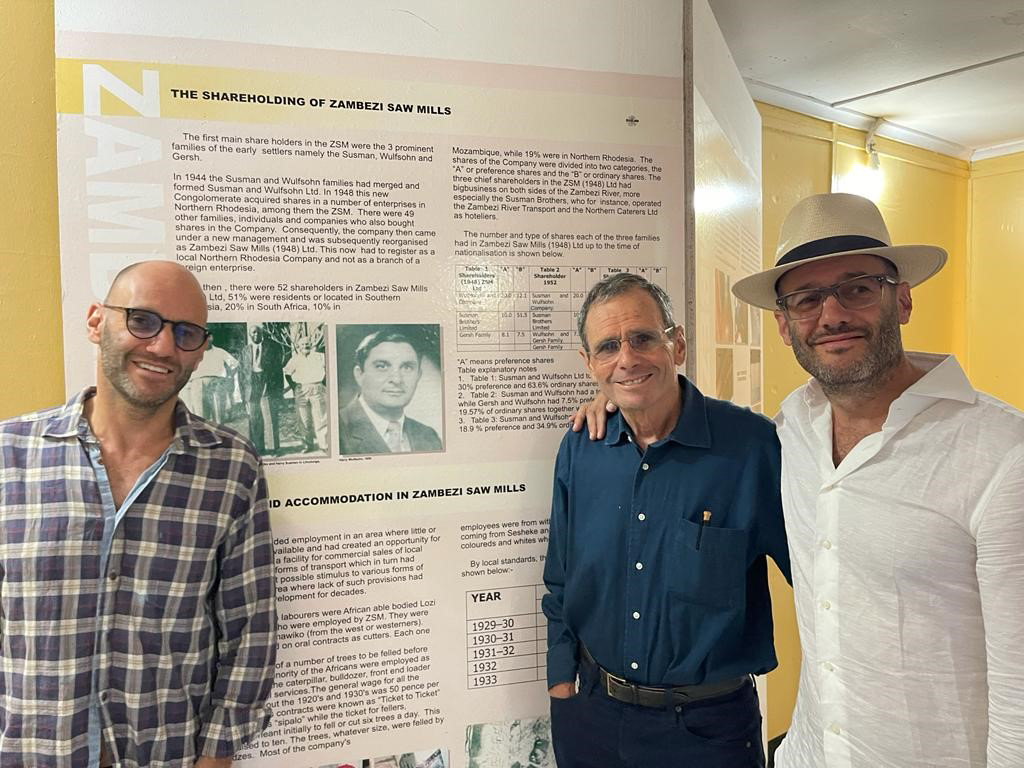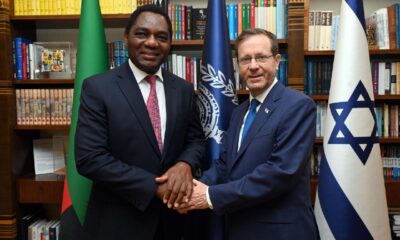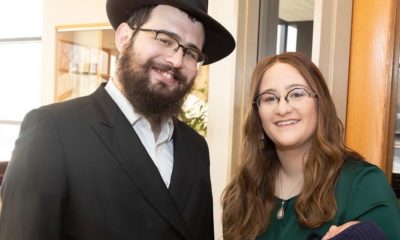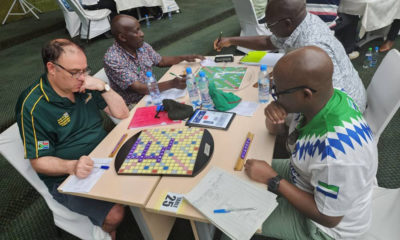
Featured Item

Zambian Jews left a lasting legacy
Published
2 years agoon
“What did Jews have to do with the development of modern Zambia? Everything!” That was the assessment of geophysicist Paul Bauman, who recently visited the Gateway Jewish Museum in Livingstone. Indeed, the small but significant Zambian Jewish community punched above its weight in the century or so that it flourished in the southern African country (also known before its independence as Northern Rhodesia).
University of Oxford historian Hugh MacMillan who authored Zion in Africa: The Jews of Zambia with Frank Shapiro says of the early Jewish settlers: “The Jews arriving in Northern Rhodesia were economic migrants and refugees, escaping persecution and looking for a place where they could make a better living.” In the words of Helen Mohrer, a German Jewish refugee: “Northern Rhodesia was very good to us, and as Northern Rhodesia grew, so we grew with the country.”
Litvak Jews first came to Zambia at the end of the 19th century, and many settled in the capital, Livingstone. Reaching about 1 000 Jews at its peak, its members included significant figures in Zambia’s economic and political life. Among the most influential was Simon Zukas, who played a key role in Zambia’s struggle for independence from Britain, in which he was exiled by the colonial government for being a “danger to peace and good order”. He went on to be a government minister after independence, and remained in Zambia until his death last year.
Among the most influential Jewish immigrants were the Susman brothers, Elie and Harry. They arrived in 1901, coming from an Orthodox family in Lithuania. As pioneer cattle-traders, they settled in Livingstone and went on to build a business empire. They were staunch Zionists, contributing significantly to Jewish communal activities. Elie later moved to South Africa where, in partnership with Max Sonnenberg, he established the Woolworths chain.
Another Harry from a younger generation, Harry Wulfsohn, would also make his way to Zambia, from Latvia in 1929. At the age of 14, he came to Africa with 10 pounds in his pocket, not knowing a word of English. He began to work with Harry Susman, his mentor, and together, they built a vast empire including 225 000 acres of farms, 25 000 cattle, 30 butcheries, a dairy, piggery, 150 retail stores, and Zambezi Sawmills. Both families maintain ties to the country to this day.
Harry’s son, Edwin Wulfsohn, along with his two sons, met Zambian president Hakainde Hichilema in August 2022. The meeting was organised by African Jewish Congress (AJC) Chief Executive Rabbi Moshe Silberhaft, who has a warm relationship with the president.
As a governor of Tel Aviv University (TAU) and in collaboration with the Lusaka Jewish community, Wulfsohn orchestrated a partnership between TAU and the new Copperbelt Public Health University. Zambia and Israel have positive relations, including exchanging ambassadors.
The president, Wulfsohn, his sons, and Silberhaft discussed the relocation and upgrading of the Gateway Jewish Museum in Livingstone. The museum was founded by the late David Susman. It’s administered by the AJC.
“We’re forever improving the information and display,” says Silberhaft. He says the museum is likely to be moved to the Livingstone Museum in the near future, which will be more central and secure. “We have been working with the local municipality and authorities. In its current location, the screens were stolen, but if it’s moved, it will be more secure. We can then improve the exhibition.”
The museum gets about 350 visitors a month. “This includes tourists from all over the world and local schoolchildren. It’s part of their syllabus in Grade 10.” The museum is run by the AJC and funded by the sale of community assets in Zambia. It’s administered by the national museums council, which consults the AJC.
The museum tells the story of how Jewish migrants established trading communities in the areas known as the Line of Rail and the Copperbelt. They built rural stores, developed farms and ranches, and played a significant role in developing towns and new industries such as textiles.
Abe Galaun is another example of economic success. This chairperson of the Lusaka Hebrew Congregation and former member of the Lusaka Chamber of Commerce, flourished in the country, even during the post-colonial period of economic decline. His family owned eight farms totalling 25 000 acres of land, and retail businesses such as butcheries, grocery stores, a hotel, and the first non-segregated movie theatre in Lusaka.
Their contributions to the economy included supplying cattle, developing dairy production, and exporting tobacco, coffee, and horticultural items. Zambian President Kenneth Kaunda once dubbed Galaun “the man who feeds the nation”. Writing about the community, David Saks noted that Galaun’s company calendars always started in October to coincide with Rosh Hashanah.
Women such as Frieda Glasser, Helenne Illion, Peggy Rabb, or Hessie Lowenthal, also made an impact economically and religiously. The devoutly Orthodox Glasser, for instance, owned the first bakery and dairy in Lusaka. These women were active in Jewish communal organisations and were important in building Hebrew congregations.
Contributions to public life included Hyan Schulman, the first Jewish mayor of Ndola in 1937; Maurice Rabb, twice mayor of Livingstone in 1951 and 1956; and Dennis Figov, twice mayor in Luanshya. Jews also served as mayors in Broken Hill and Kitwe.
In the 1930s, Sir Roy Welensky was the leading political figure in Northern Rhodesia. From 1959 to 1962, Rabb was elected to the national legislative assembly. From 1962 to 1968, SW Magnus was a prominent member of the Zambian parliament. After 1968, Magnus was appointed a high court judge.
Other immigrants who made an impact include included the Pinshow, Elkaim, Kollenberg, Gersh, Kopelowitz, Diamond, and Tow families, amongst others. Stanley Fischer, the governor of the Bank of Israel from 2005 to 2013 and vice-chairperson of the Federal Reserve Bank from 2014 to 2017, was born in Zambia and partially raised in the Zambian Jewish community.
In 1978, the Council for Zambia Jewry was founded in Lusaka to oversee Jewish communal activities. There were shuls in Livingstone (along with a congregation hall), Lusaka, Mufulira, Kitwe, Ndola, and Luanshya. There are eight Jewish cemeteries around the country.
The community began to decline in number after Zambia’s independence in 1964. “By the late 1970s and early 1980s, Jewish political leaders became disillusioned with Kaunda’s government as it degenerated into one-party rule,” notes Bauman. “At the same time, visa requirements were relaxing and entrepreneurial opportunities opening up in other countries.” It led to the shrinking of the Zambian Jewish community, which left its mark in the space of one or two generations.










